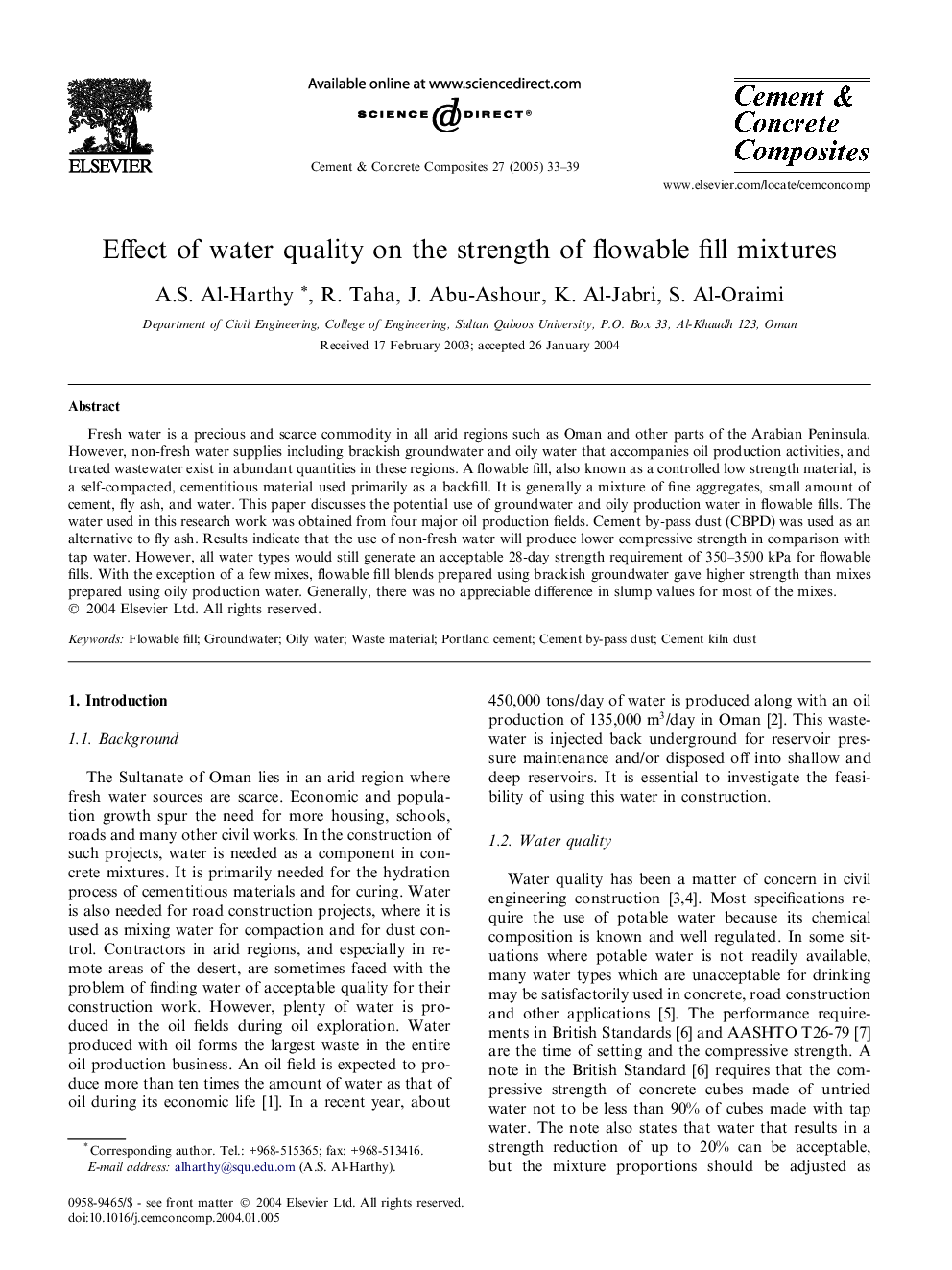| Article ID | Journal | Published Year | Pages | File Type |
|---|---|---|---|---|
| 10621961 | Cement and Concrete Composites | 2005 | 7 Pages |
Abstract
Fresh water is a precious and scarce commodity in all arid regions such as Oman and other parts of the Arabian Peninsula. However, non-fresh water supplies including brackish groundwater and oily water that accompanies oil production activities, and treated wastewater exist in abundant quantities in these regions. A flowable fill, also known as a controlled low strength material, is a self-compacted, cementitious material used primarily as a backfill. It is generally a mixture of fine aggregates, small amount of cement, fly ash, and water. This paper discusses the potential use of groundwater and oily production water in flowable fills. The water used in this research work was obtained from four major oil production fields. Cement by-pass dust (CBPD) was used as an alternative to fly ash. Results indicate that the use of non-fresh water will produce lower compressive strength in comparison with tap water. However, all water types would still generate an acceptable 28-day strength requirement of 350-3500 kPa for flowable fills. With the exception of a few mixes, flowable fill blends prepared using brackish groundwater gave higher strength than mixes prepared using oily production water. Generally, there was no appreciable difference in slump values for most of the mixes.
Related Topics
Physical Sciences and Engineering
Engineering
Industrial and Manufacturing Engineering
Authors
A.S. Al-Harthy, R. Taha, J. Abu-Ashour, K. Al-Jabri, S. Al-Oraimi,
